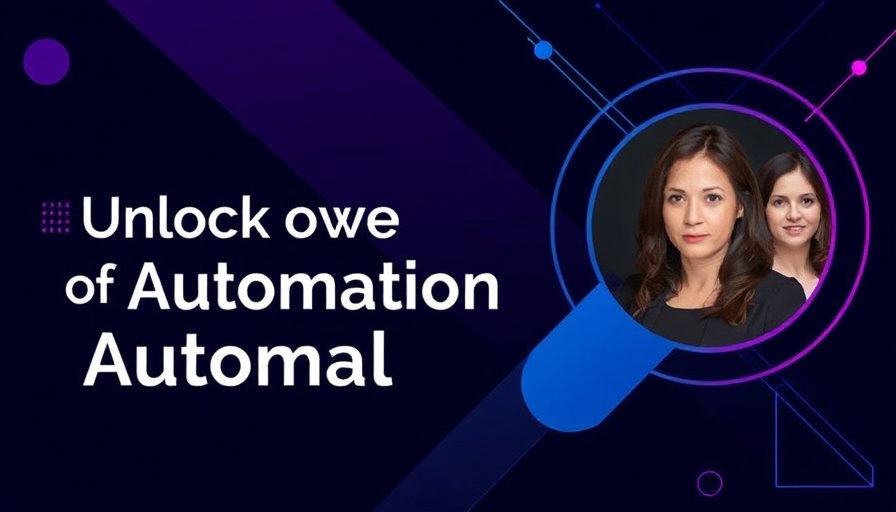
Understanding HubSpot Automation: More than Just Basics
Marketers and business owners often view automation as a ticket to streamline their processes and save time. However, merely implementing the basic functions of a tool like HubSpot is not enough to unlock its full potential. In an age where digital marketing is rapidly evolving, it is imperative to reassess not just what automation can do, but also how you can leverage it to better attract and engage your audience.
Common Misconceptions About Marketing Automation
Many businesses assume that once they set up their marketing automation tools, such as HubSpot, everything will run smoothly. This is a misconception; automation requires ongoing strategy and fine-tuning. Simply deploying emails, social media posts, and landing pages does not equate to a cohesive marketing strategy. It's important to understand that automation is a journey, not a destination.
Future Trends Shaping Marketing Automation
As we look ahead, several key trends are shaping the future of marketing automation. One such trend is the integration of AI and machine learning. According to industry reports, AI improves customer targeting and personalization, allowing marketers to automate responses based on customer behavior. Additionally, the rise of voice search optimization will influence how businesses tailor their automated messages. These shifts will require marketers to be adaptable, continuously updating their strategies to stay relevant.
Real-Life Impact of Enhanced Automation Strategies
Consider the story of a small e-commerce business that revamped its HubSpot automation strategy. Initially focused solely on sending automated emails, they transitioned to a more integrated approach involving personalized landing pages and dynamic calls to action driven by customer data. This shift resulted in a 40% increase in their conversion rate within three months. Such case studies demonstrate the value of customizing automation strategies rather than relying on cookie-cutter templates.
Are You Maximizing HubSpot's Features?
HubSpot's features go beyond basic automation functionalities. Utilize workflows to segment your audience and create tailored marketing messages that resonate with specific groups. For instance, you can develop a comprehensive content strategy that interlinks landing pages to guide customers to the next stage of the buying journey. Understanding these capabilities can enhance your outreach and overall marketing ROI.
Actionable Tips to Enhance Your Automation Strategy
To truly harness the power of HubSpot, consider these actionable tips: 1) Regularly conduct an SEO audit to keep your content optimized for search engines, 2) Utilize A/B testing on your emails and landing pages to discover what resonates best with your audience, and 3) Implement user experience optimization techniques to ensure every touchpoint is seamless. These strategies will not only improve your marketing tactics but also help build a stronger connection with your customers.
Embracing a Customer-Centric Approach
Ultimately, successful marketing automation is about putting the customer at the center. The insights gleaned from customer interactions should guide your automation strategy. Consider their preferences, timing, and engagement history. A personalized touch can turn automation from a robotic experience into a meaningful conversation.
As you reflect upon your automation strategy, ask yourself if you're merely skimming the surface or diving deep into the ocean of possibilities that HubSpot can offer. Innovative automation solutions, grounded in meaningful customer engagement, can drive your business toward greater success.
Call to Action
Now is the time to refine your automation strategy. Take a step back and evaluate how your current practices align with your marketing goals. Engage with our team of experts and discover how we can help transform your automation strategy into a powerful tool that drives growth and customer loyalty.
 Add Row
Add Row  Add
Add 




Write A Comment